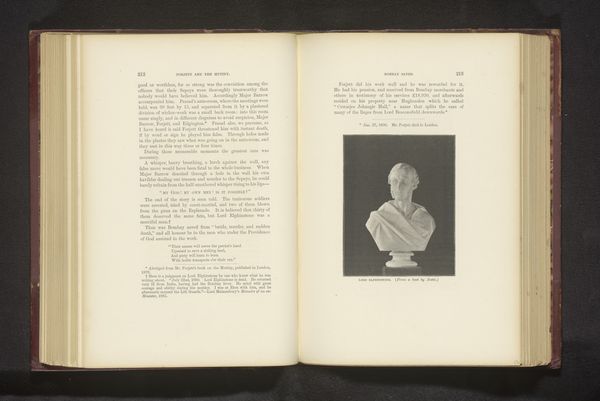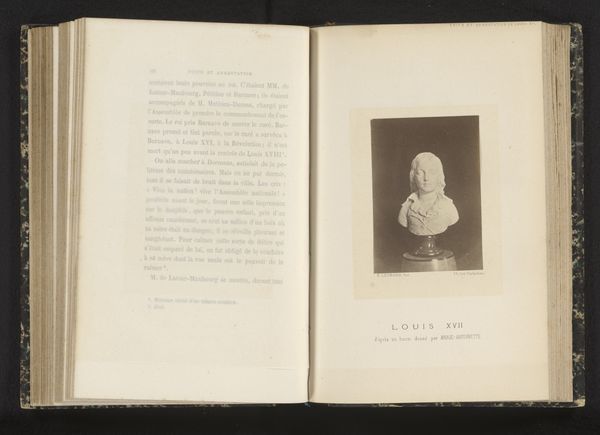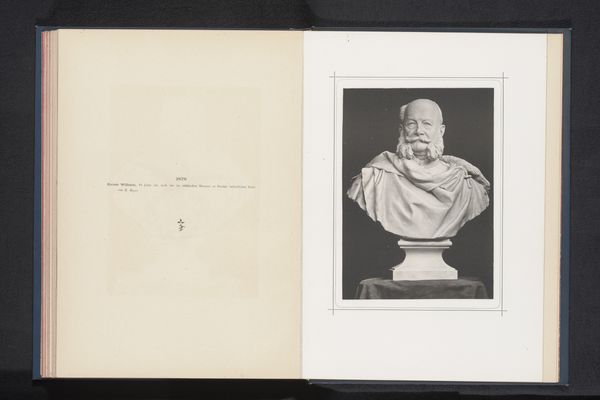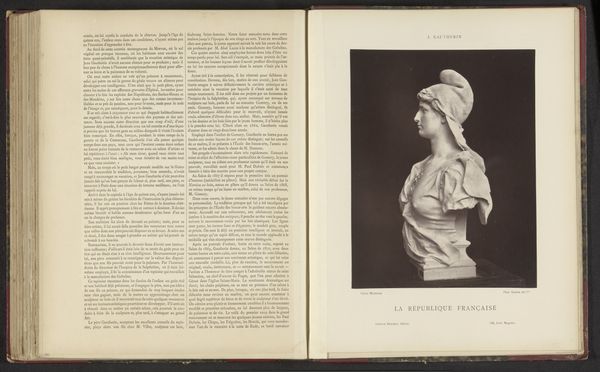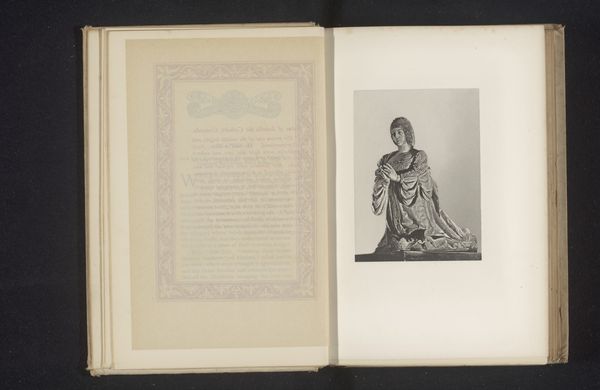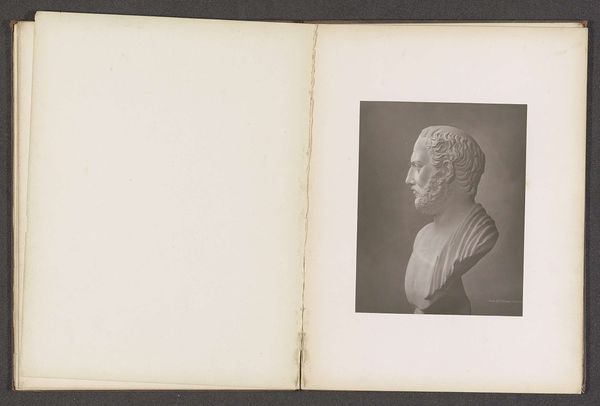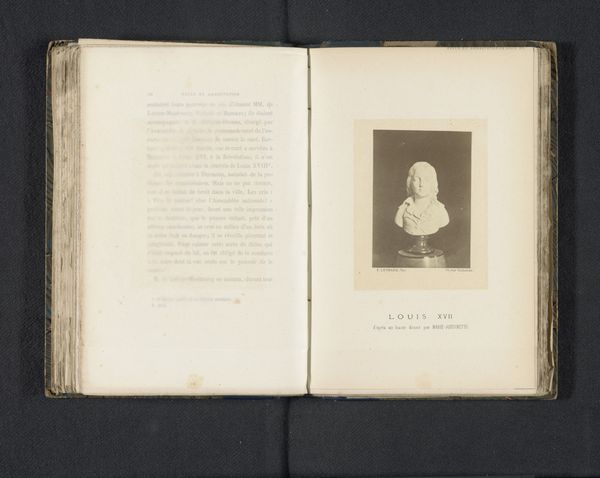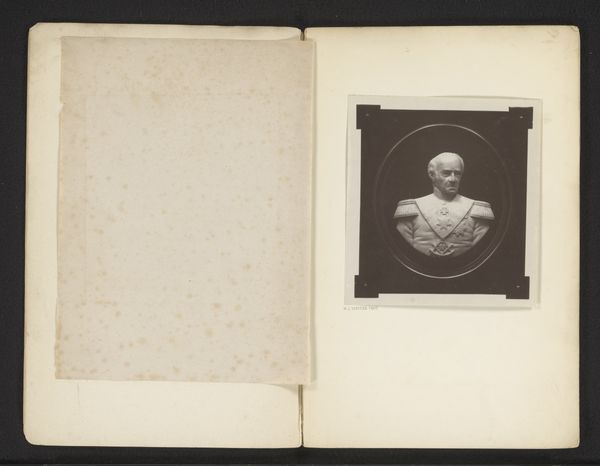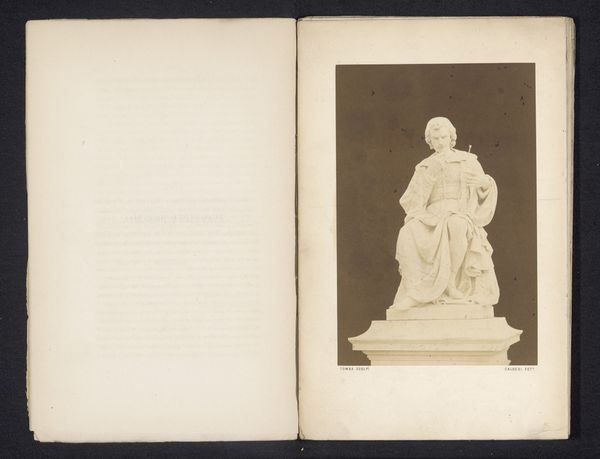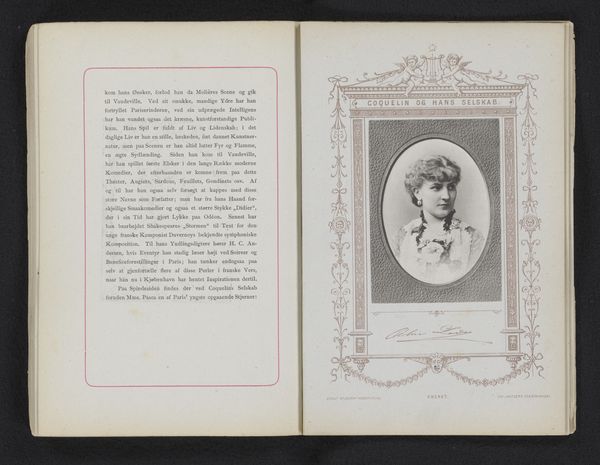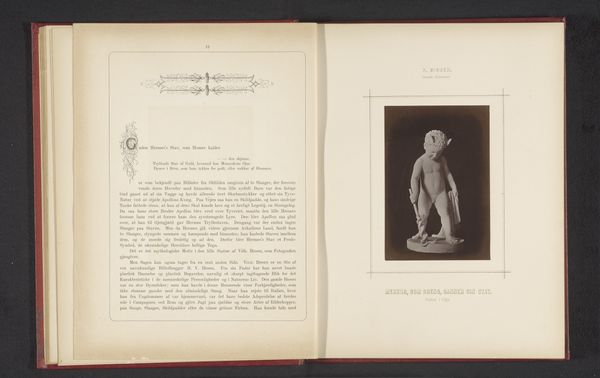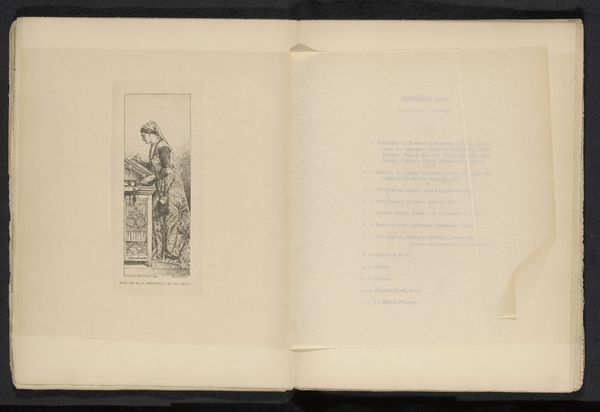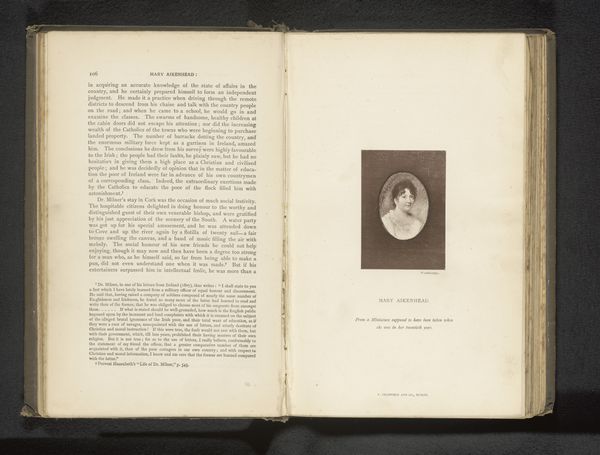
print, sculpture, marble
#
portrait
# print
#
classical-realism
#
sculpture
#
marble
Dimensions: height 157 mm, width 109 mm
Copyright: Rijks Museum: Open Domain
Curator: This print showcases "Sculptuur van het hoofd van David" ("Sculpture of the Head of David") by Charles van der Stappen, completed before 1883. The artist renders a classical subject with striking realism. Editor: My first impression is one of stillness. The sculpture's delicate modeling and the cool marble, expertly captured, suggest a quiet strength. There's a captivating blend of serenity and focused energy emanating from this depiction of David. Curator: Absolutely, the interplay of light and shadow is crucial to that effect. Notice the precise sculpting around the eyes and mouth, how van der Stappen uses subtle gradations to convey depth and emotion. We see an attempt to convey both physical beauty and inner resolve, rendered skillfully through form and line. Editor: That leads me to consider the historical context of depicting David. In art, David isn’t merely a hero, but represents civic virtue and justified revolt against tyranny. Does this sculpture resonate within that historical arc? Does it serve the narrative of liberation struggles present in Belgian national identity? Curator: Interesting point. But viewed from a Formalist approach, note the texture contrast, the smooth skin juxtaposed with the rougher texture of the hair – these elements alone can speak volumes. This print serves less as a document of history and more as a showcase of the artist’s ability to evoke idealized form from intractable marble. Editor: Perhaps. However, an understanding of Belgian art world norms during that era and considering van der Stappen’s public commissions sheds light on its broader cultural resonance beyond the formal elements themselves. Did this portrayal help establish his artistic reputation? Curator: It undeniably contributes to the canon of Classical Realism, underscoring principles of idealized form while also conveying believable human emotion through calculated detail. Editor: For me, this sculpture, seen through its documented history and production and reception also contributes meaningfully to how art participates in sociopolitical narratives. Curator: Ultimately, regardless of context, it remains a captivating study of form. Editor: And of historical meaning within public consciousness.
Comments
No comments
Be the first to comment and join the conversation on the ultimate creative platform.
